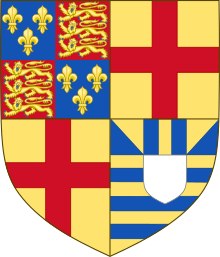| House of York | |
|---|---|
 As descendants of King Edward III in the male line, the first three Dukes of York bore the arms of that King (adjusted for France modern) differenced by a label of three points argent each bearing three torteaux gules. The 4th Duke, later King Edward IV, abandoned his paternal arms in favour of new arms emphasising his descent via female lines from the royal line of Clarence/de Burgh/Mortimer, senior to that of the House of Lancaster | |
| Parent house | House of Plantagenet |
| Country | |
| Founded | 1385; 639 years ago |
| Founder | Edmund of Langley |
| Current head | Extinct |
| Final ruler | Richard III of England |
| Titles | |
| Dissolution | 1499 |
| Deposition | 1485 |

The House of York was a cadet branch of the English royal House of Plantagenet. Three of its members became kings of England in the late 15th century. The House of York descended in the male line from Edmund of Langley, 1st Duke of York, the fourth surviving son of Edward III. In time, it also represented Edward III's senior line, when an heir of York married the heiress-descendant of Lionel, Duke of Clarence, Edward III's second surviving son. It is based on these descents that they claimed the English crown. Compared with its rival, the House of Lancaster, it had a superior claim to the throne of England according to cognatic primogeniture, but an inferior claim according to agnatic primogeniture. The reign of this dynasty ended with the death of Richard III of England at the Battle of Bosworth Field in 1485. It became extinct in the male line with the death of Edward Plantagenet, 17th Earl of Warwick, in 1499.